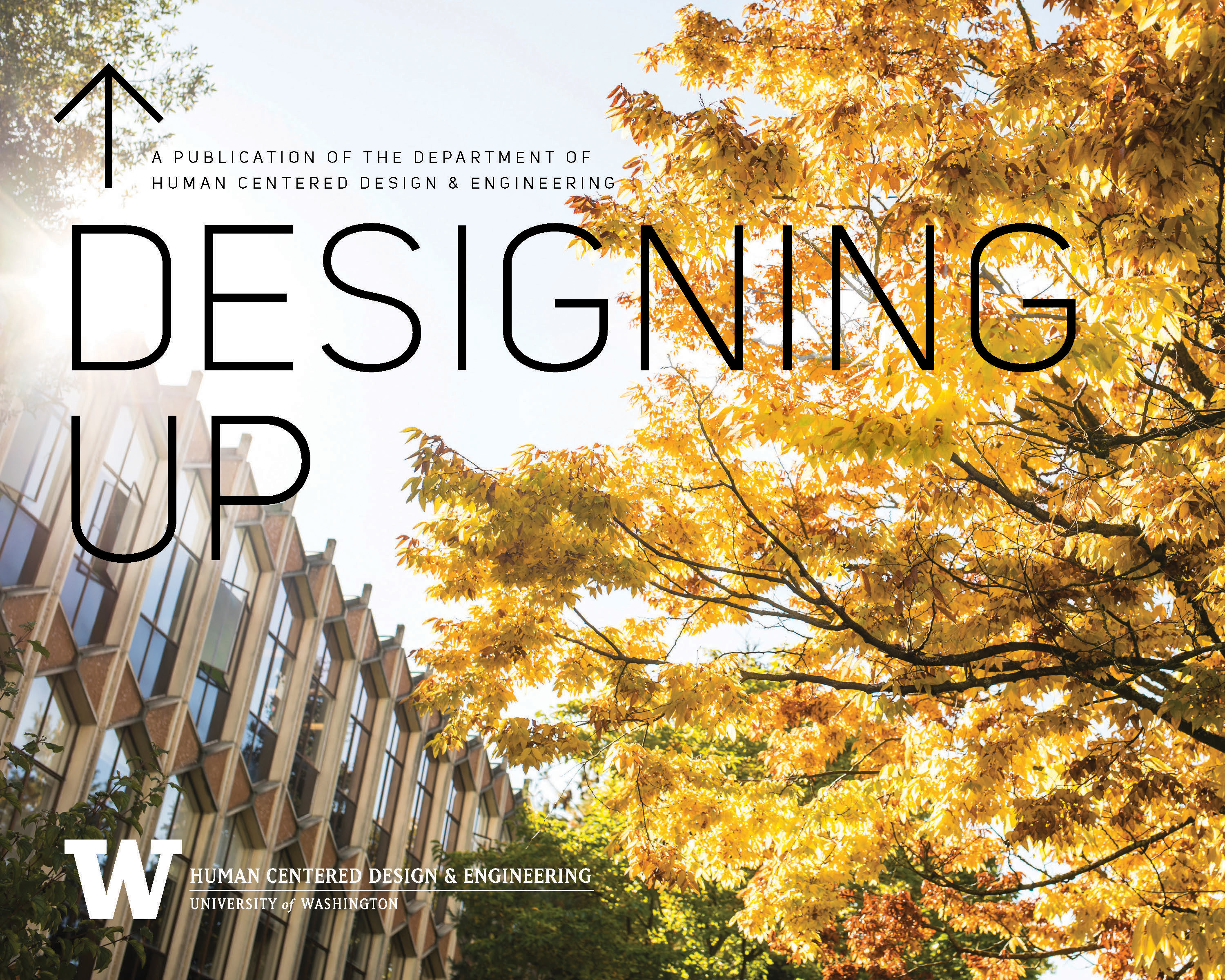Leah Pistorius
June 22, 2022
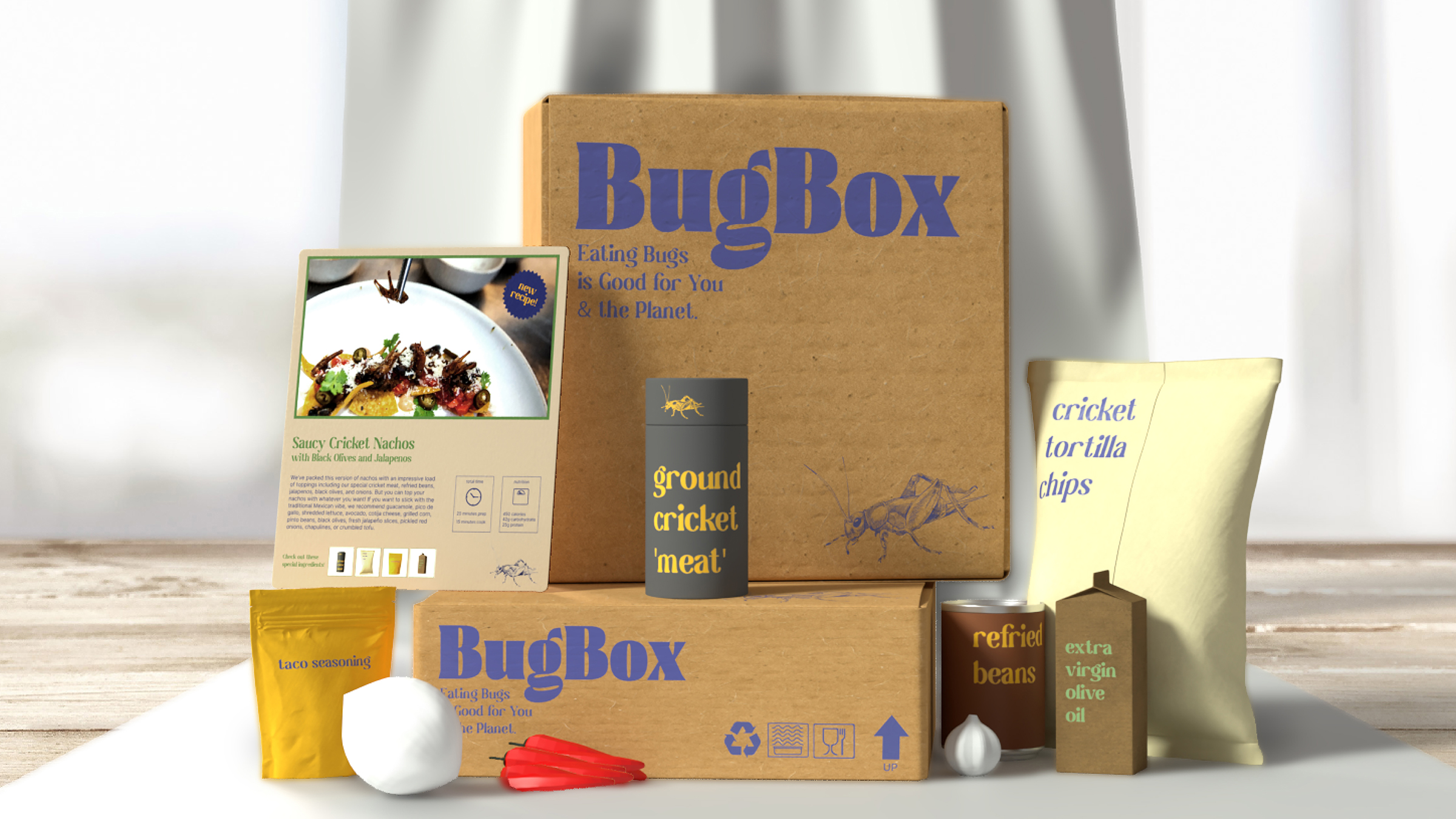
A new Service Design course in the Department of Human Centered Design & Engineering connects human-centered design principles to large-scale ecosystems.
Service Design is a field that focuses on the success of an organization by extending beyond an individual product or user experience to cover a complex chain of interactions. For students in the Department of Human Centered Design & Engineering, a new course on Service Design is an opportunity to understand how human-centered design principles can apply to a large-scale ecosystem.
"I see Service Design as the future of UX,” said Tyler Fox, an associate teaching professor in HCDE. Fox designed the new course and taught its first session in Autumn 2021. “With Service Design we can help students think about the design of holistic experiences—not just for an end-user, but for both customers and employees and the interactions involved.”
“At the beginning of the course, we crowdsourced a list of services that students interact with in their day-to-day lives,” Fox described. “Services like Spotify, Netflix, and Amazon were popular with the class. So those are examples of technology services, but we also talked about the service design of something like a restaurant. In a restaurant you have the front-of-house—that includes wait staff, hostess, maybe bussers or bartenders—and then in the back-of-house you have the cooks, the admin staff, the inventory. When you’re designing services, you are designing both of those things and the relationships between them.”
Through readings and guest lectures, the students in the class explored concepts, methods, and practices for Service Design, and learned about the various Service Design deliverables such as ecosystem maps, service blueprints, narrative prototypes, and branding.
“In my mind, Service Design might traditionally come out of a business school plan, but what I think HCDE brings to this space is we’re doubling down on the human aspect,” said Sean Horita, a master’s student from the autumn course. “Whereas a business plan might include all the financials that make the system operate, the Service Design is a plan that considers every human experience—the stuff that makes it work for people.”
“An additional dimension that I appreciated in the course was a lot of conversation around values, and it’s a big part of what I’m taking back to my day-to-day work as a researcher,” described HDCE master’s student Honson Ling. “Values can kind of feel like a squishy concept, but through the course we learned how to build a values framework that we could introduce into our design process and return to at each stage.”
The BugBox Service
Over the 10-week quarter, students worked in small groups on a final project to address the prompt: design a service to address the climate crisis.
Ling and Horita teamed up with fellow students Brayan Zavala and Quilla Valdez Graves to design BugBox, a meal delivery service for eating insects.
“We all shared an interest in supply chains, and disruptions related to COVID,” described Graves. “One of those impacted things currently is the global food supply chain, so we started to look at alternatives around food.”
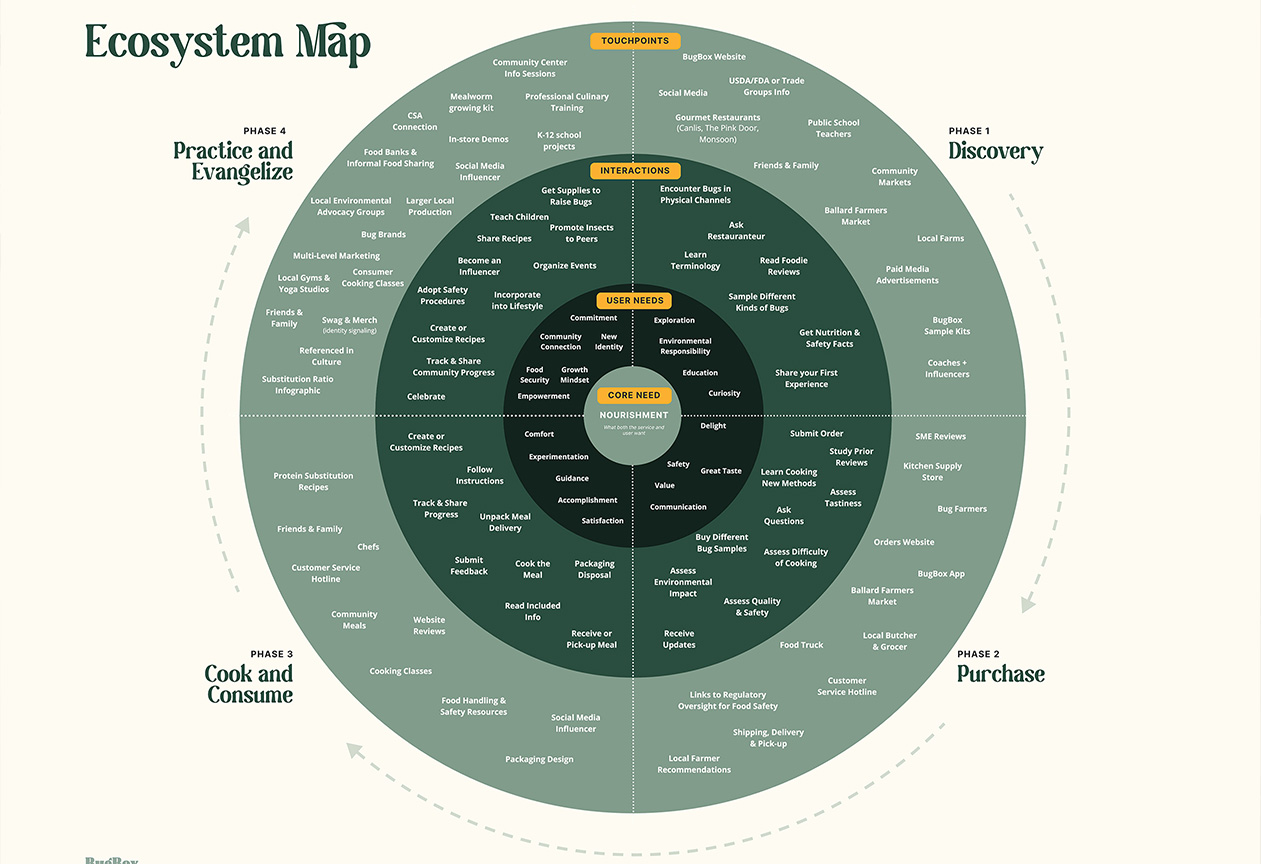
The team developed a service ecosystem map to organize the different tools, artifacts, and people involved in their service, centered on the primary value of a deep-seated need for human nourishment. The BugBox service is comprised of four phases which lead an eater through a process of becoming committed to entomophagy, the practice of eating insects.
“We read an article about eating insects as an alternative form of protein, and that’s what started this journey into bugs for us,” described Zavala. “We found out that if you were to switch one pound of beef for one pound of cricket protein, you’d be saving more water than all the showers you take in a full year. So, that switch just makes sense. But the hard part for a Service Design project became: how many people are willing to do that? What are the barriers that they encounter, especially culturally? And how can a service express the value they may get out of making that switch?”
The team conducted interviews with subject matter experts, a consumer attitude survey, and co-design workshops with people who were interested in edible insects, while still being hesitant about eating them. From the workshops, they were able to pull out values and insights that guided the rest of the project: sustainability, resilience, community, and trust. “These values come through all of our different touchpoints and interactions,” described Ling. “We communicate our values like trust through our branding and visual design, including tone of voice, and community through in-person events and online communities."
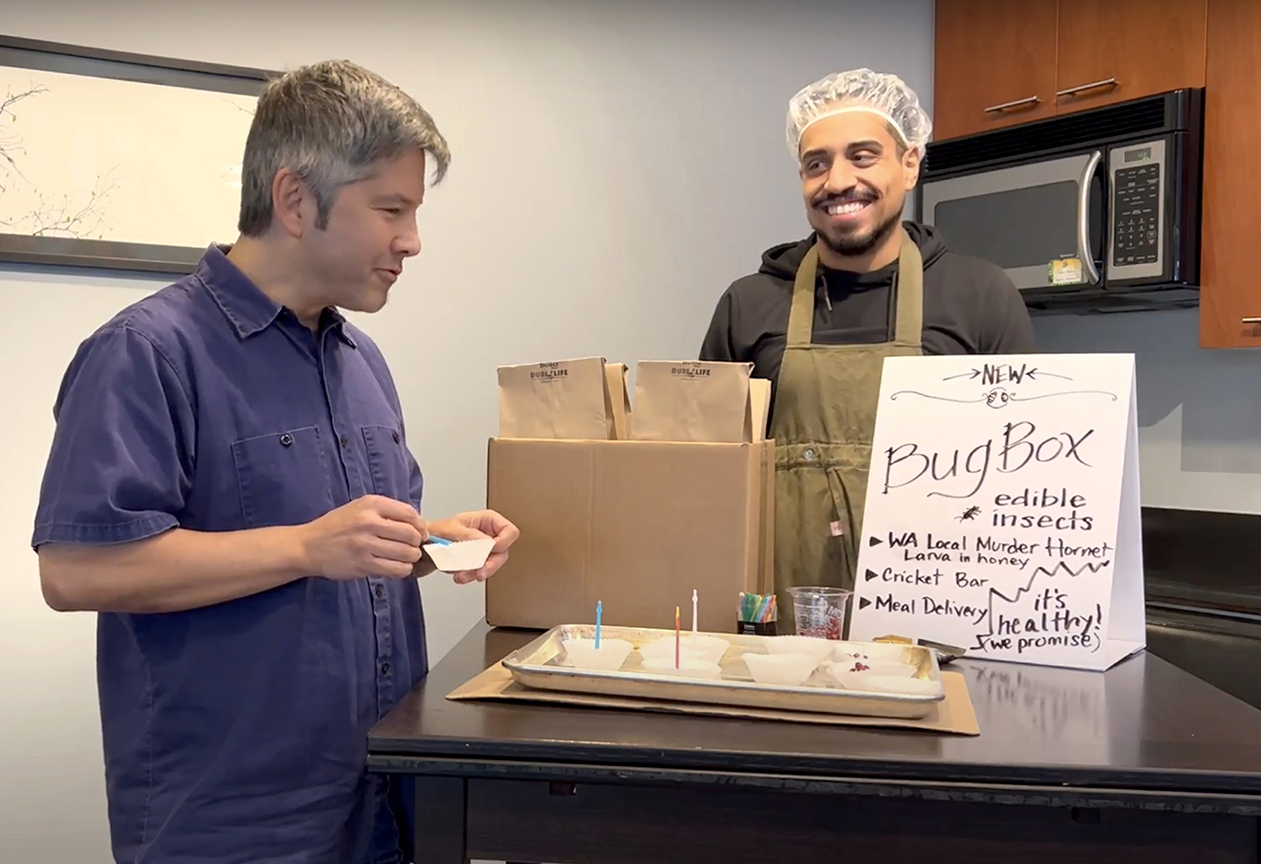
The team tested their concept with narrative prototypes, a research method using role play, to study their service touchpoints. In this scenario, a customer is being introduced to BugBox through food sampling at a local grocery market. The students played the roles of a salesperson, a skeptical consumer, and an interested soon-to-be bug eater.
The BugBox service focuses on an incremental introduction to edible insects for people who are curious about the concept and passionate about climate change. BugBox is a subscription model where subscribers first encounter the brand in community-focused and familiar spots like farmer’s markets, health-food groceries, and local restaurants. New users receive onboarding through the BugBox app, where they can calibrate their nutrition and dietary history to build an eater profile. Meal selections can be tailored for the quantity and type of insects, cuisines, and cooking proficiency. In addition to the meal kit and ingredient delivery, users are invited to join the BugBox community to discover local restaurant events, connect with insect producers, and learn how their actions benefit the planet.
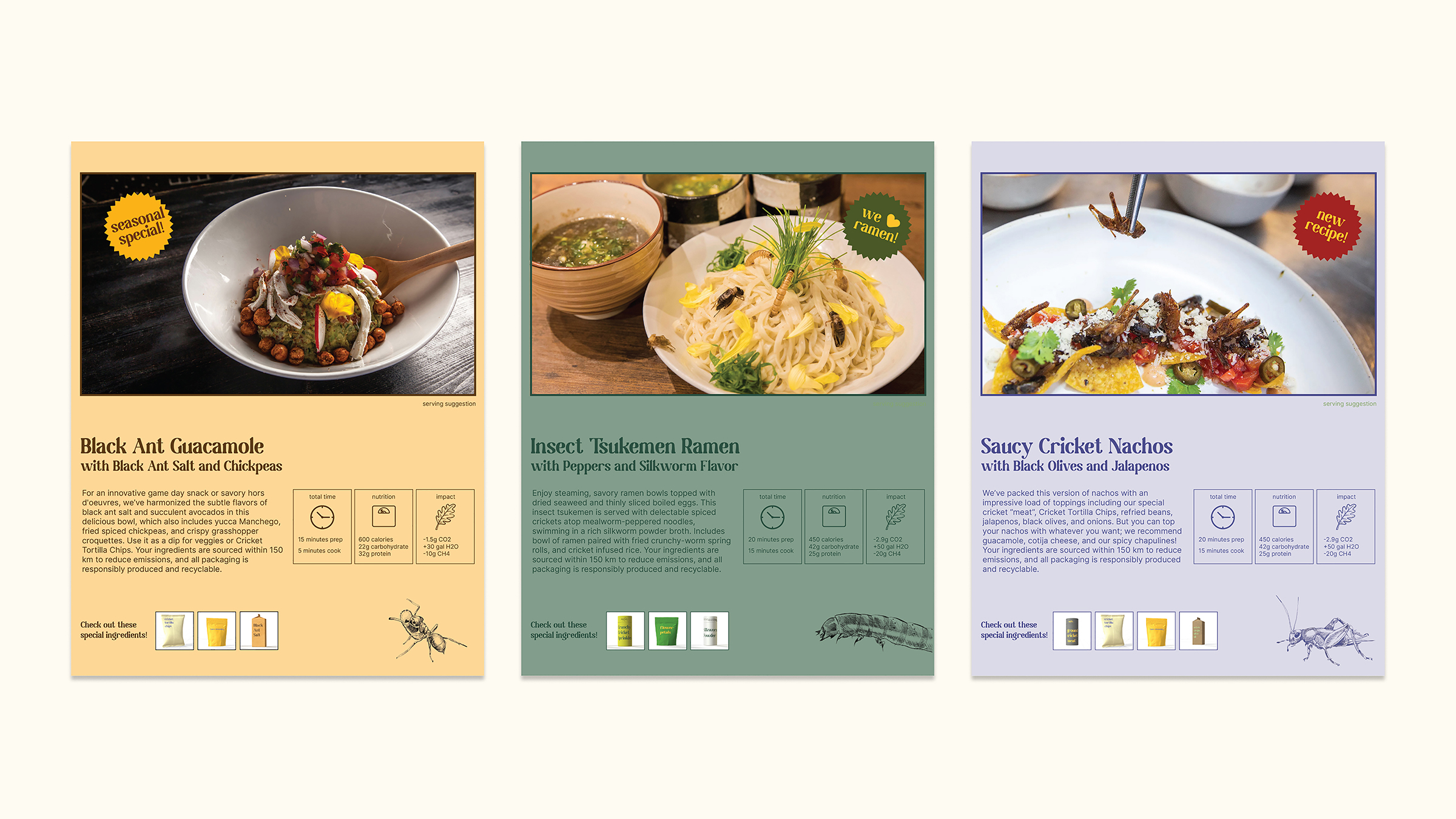
With BugBox, a user can customize the selection of recipe cards they receive in their meal kit, depending on their level of comfort with cooking with insects. Options range from insect powder to whole cooked insects.
"This course was eye-opening to me because it was the first time we considered that human-centered design doesn’t always mean the end-user. With good service design you’re making something work better for customers, as well as all the people doing the work and the business at large,” said Horita. “To me, it was a really good glue that tied together a lot of other things I had gotten out of the HCDE curriculum.”
“I am taking so much out of this course that I am already applying to different contexts,” described Graves. “I work as a program manager in human resources, and I see a very natural intersection with Service Design. From onboarding to attending a meeting, to understanding employee lifecycle, using the lens of Service Design is a really enriching way to study whole experiences at a large scale.”
HIGHLIGHTS FROM 2021-2022 YEAR
2022 Designing Up
View this story and others in HCDE's annual publication, Designing Up, where we highlight activities and accomplishments of HCDE's students, alumni, and faculty.
View the 2022 issue